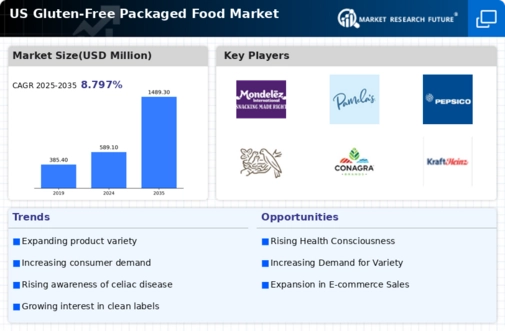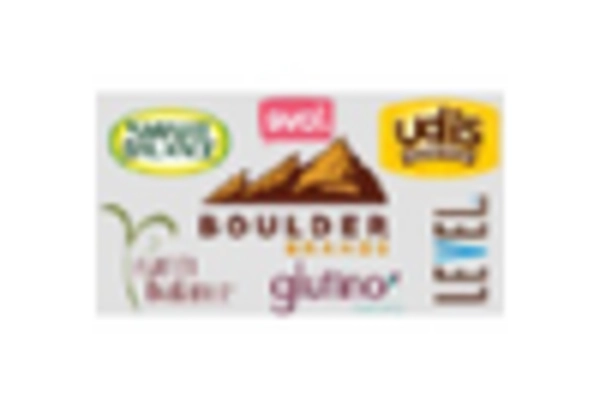Health Trends and Dietary Preferences
The gluten free-packaged-food market is closely aligned with evolving health trends and dietary preferences. As consumers increasingly prioritize clean eating and natural ingredients, gluten-free products are often perceived as healthier alternatives. The market is witnessing a shift towards organic and non-GMO gluten-free options, with many consumers willing to pay a premium for perceived health benefits. Data shows that the organic gluten free-packaged-food segment has grown by approximately 25% in the past year, indicating a strong consumer preference for products that align with their health values. This trend suggests that the gluten free-packaged-food market will continue to thrive as it adapts to the changing landscape of consumer preferences, emphasizing quality and health-conscious choices.
Rising Demand for Gluten-Free Options
The gluten free-packaged-food market is experiencing a notable increase in demand as consumers become more health-conscious. This shift is largely driven by a growing awareness of gluten-related disorders, such as celiac disease and gluten sensitivity. According to recent data, approximately 1 in 100 individuals in the US are diagnosed with celiac disease, leading to a heightened need for gluten-free alternatives. Furthermore, a significant portion of the population is opting for gluten-free diets as a lifestyle choice, even without medical necessity. This trend is expected to propel the gluten free-packaged-food market, as manufacturers respond by expanding their product lines to cater to this diverse consumer base. The market's growth is indicative of a broader shift towards healthier eating habits, with gluten-free products becoming increasingly mainstream in grocery stores and restaurants alike.
Influence of Social Media and Marketing
The gluten free-packaged-food market is significantly influenced by social media and targeted marketing strategies. Platforms such as Instagram and Facebook have become vital for brands to engage with consumers, showcasing gluten-free products and sharing recipes that highlight their versatility. This digital presence not only raises awareness but also fosters a community around gluten-free living. Recent studies suggest that nearly 70% of consumers are influenced by social media when making food purchasing decisions. As brands leverage influencer partnerships and user-generated content, the gluten free-packaged-food market is likely to see increased consumer interest and sales. This marketing approach not only promotes product visibility but also builds trust and loyalty among consumers, further driving the market's growth.
Regulatory Support and Labeling Standards
The gluten free-packaged-food market is positively impacted by regulatory support and established labeling standards. The US Food and Drug Administration (FDA) has set clear guidelines for gluten-free labeling, which helps consumers make informed choices. These regulations not only protect consumers but also encourage manufacturers to produce gluten-free products that meet specific criteria. As a result, the market is likely to see an increase in the number of certified gluten-free products, enhancing consumer confidence. Furthermore, regulatory support can lead to greater innovation within the gluten free-packaged-food market, as companies strive to meet these standards while developing new and appealing products. This regulatory framework is essential for fostering a trustworthy environment for consumers and promoting the growth of the gluten free-packaged-food market.
Increased Availability of Gluten-Free Products
The gluten free-packaged-food market is benefiting from enhanced product availability across various retail channels. Supermarkets, health food stores, and online platforms are increasingly stocking gluten-free options, making it easier for consumers to access these products. Data indicates that the number of gluten-free products available in the US has surged by over 30% in recent years, reflecting a growing commitment from retailers to meet consumer demand. This increased availability not only caters to those with dietary restrictions but also appeals to a broader audience seeking healthier food choices. As more retailers recognize the profitability of gluten-free offerings, the market is likely to see continued expansion, with new products and brands entering the space. This trend underscores the importance of accessibility in driving the growth of the gluten free-packaged-food market.

















Leave a Comment